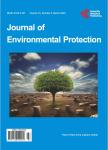Succession of the Plant Communities of the Ustyurt Eastern Cliff (Republic of Uzbekistan) in Connection with Climate Change
Succession of the Plant Communities of the Ustyurt Eastern Cliff (Republic of Uzbekistan) in Connection with Climate Change作者机构:Institute of Botany AS RUz Tashkent Uzbekistan Unitary Enterprise “Geoinform Cadastre” Tashkent Uzbekistan
出 版 物:《Journal of Environmental Protection》 (环境保护(英文))
年 卷 期:2018年第9卷第13期
页 面:1408-1424页
学科分类:1002[医学-临床医学] 100214[医学-肿瘤学] 10[医学]
主 题:Ustyurt Plateau Eastern Cliff Climate Change Species Diversity Total Projective Cover Invasive Species
摘 要:A decrease in the amount of precipitation is observed on average 18 - 20 mm compared with the periods before the Aral crisis and the average annual temperature rise over the long-term period is 2.0°C in the Central part of Ustyurt. An increase in the Si index meaning an increase in the degree of drought every ten-flight is clearly expressed in the months March-July. Data Analysis 1981-2017 shows that within 36 years the species diversity in the monitoring sites of Kabanbay decreased by 2 - 3 times. In 1981 the number of species fluctuated between the values of 9 - 50, and in 2017 this figure is 4 - 17. The results of the analysis show that the forecast indicators of the old-current state (1981) of the vegetation coverage and number of species were stable or had tendencies with a low regressive character (r2 = 0.01). However, the current-state (2017) of the vegetation coverage and the species composition of the monitoring plots showed a low progressive trend (r2 = 0.03), i.e. in the future, the formation of plant communities with low vegetation coverage and species composition has a dominant status. The results show that in 1981, 65% - 80% of the species composition of plant communities consisted of halophyte and xerophyte groups. In 2017, this figure reaches 80% - 100%, i.e. this claims to increase xerophytization and halophytization of territories. An interesting fact is established with mesophyte group. In general, theoretically, the decrease in the number of mesophyte group of plants for 1981-2017 would have a direct correlation with the vegetation coverage and their active share in it. However, for 36 years, their active share in the vegetation coverage remained unchanged—amounting to 0% - 20%. Of course, in these years, the decrease in the number of mesophyte plants led to an increase in the number of plant communities, in which the proportion of vegetation coverage of mesophyte group is insignificant—0% - 5%. Despite the drought, the active part of the vegetat



